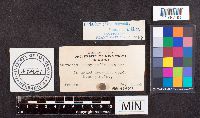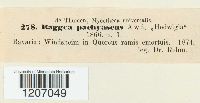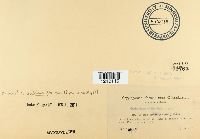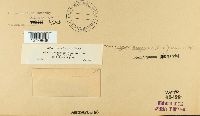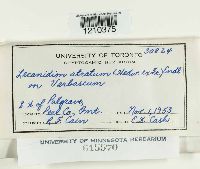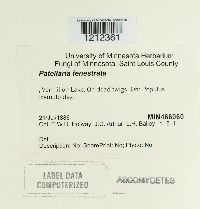University of Minnesota
http://www.umn.edu/
612-625-5000
http://www.umn.edu/
612-625-5000
Minnesota Biodiversity Atlas
Bell Museum
Dataset: MIN-Fungi
Taxa: Patellariaceae
Search Criteria: excluding cultivated/captive occurrences
1
Page 1, records 1-8 of 8
Bell Museum fungi | |
MIN:Fungi | Karschia lignyota (Fr.) Sacc. 474591[1178798]Freeman, E.M. United States, Minnesota, Hennepin, 44.983025 -93.442364 |
MIN:Fungi | Baggea pachyascus Auersw. 8579[1207049]Rehm 2781874-00-00 Czech Republic, Bavaria |
MIN:Fungi | 472085[1210115] 5191907-07-10 2400m |
MIN:Fungi | 9243[1210866]Ravenel 671 United States, California, So. Ca. |
MIN:Fungi | Lecanidion atratum (Hedw.) Endl. 615570[1210375]Cain, R.F. 308241953-11-01 Canada, Ontario, Peel, S.H. [?] of Palgrave |
MIN:Fungi | Lecanidion atratum (Hedw.) Endl. 46961[1210376]Nalesso, Aug. 16761907-05-00 Italy, Bosco di Rubano |
MIN:Fungi | Patellaria fenestrata Cooke & Peck 466060[1212361]Arthur, J.C. 118 H1886-07-21 United States, Minnesota, Saint Louis, Vermilion Lake, 47.876013 -92.344697 |
MIN:Fungi | Patellaria clavispora Berk. & Broome 47153[1212362]Seaver, F.J. 22411906-01-31 United States, Iowa |
1
Page 1, records 1-8 of 8
Google Map
Google Maps is a web mapping service provided by Google that features a map that users can pan (by dragging the mouse) and zoom (by using the mouse wheel). Collection points are displayed as colored markers that when clicked on, displays the full information for that collection. When multiple species are queried (separated by semi-colons), different colored markers denote each individual species.
